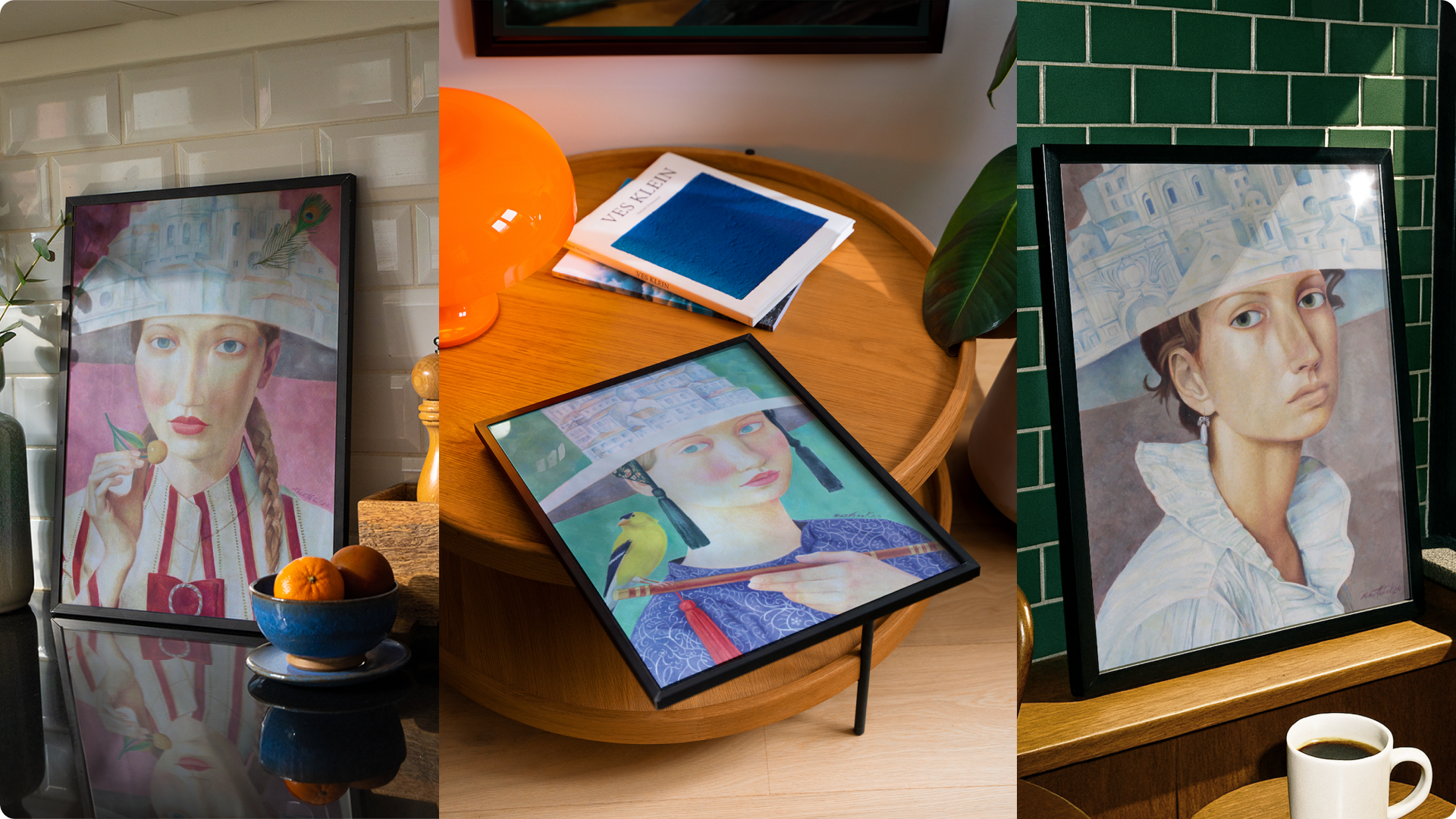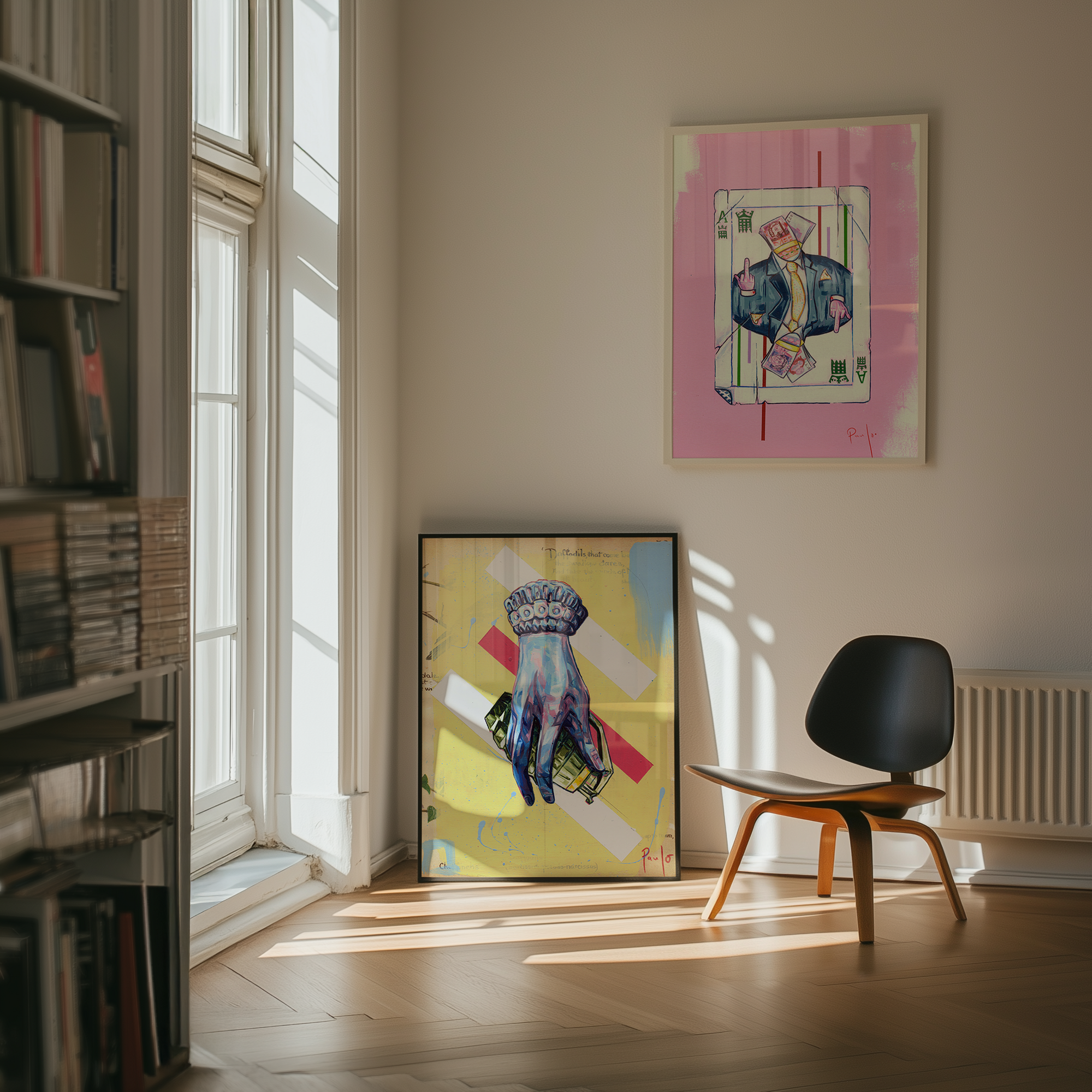Aleksandr Mihaltchuk’s journey through art spans continents, disciplines, and decades. From developing an interest in sculpture and architecture, to studying graphic design, Mihaltchuk is now based in Lisbon, Portugal, devoted fully to painting, producing richly imaginative works that merge fantasy and realism with a lyrical, narrative quality.
We spoke with Mihaltchuk about his beginnings, his evolution across media and geographies, and the creative forces that continue to drive his work.
Personal & Artistic Journey
You studied graphic design in Minsk, graduating in 1979. How did your early environment and training shape your artistic sensibilities?
My first artistic experience began at the age of five or six, when I was ill and forced to stay at home instead of going to kindergarten. I had a set of coloured plasticine and made a copy of Pinocchio, which impressed my parents. Since then, my artistic journey began.
But it was through sculpture that I first entered the world of art. I studied sculpture at a prestigious art school in Minsk. At fifteen, I dropped out and changed direction towards architecture—only to fail the admission exam. The following year, I entered the Academy of Arts in the design faculty, which I successfully graduated from in 1979. All of these twists and turns shaped my artistic sensibility and vision today.
You moved to Portugal in 1986. How did that cultural and geographical transition influence your evolution from graphic designer and illustrator to full-time painter?
Nothing goes unnoticed in the life of an artist. Everything impacts his art. It’s a complicated question, but I can say that I absorb the life around me and try to express it in my work.
For example, take the three prints of mine on Odd Wall: they reflect female portraits with hats, but those hats take the shape of Lisbon’s iconic buildings. In this way, I merged my fantasy characters with the real environment where I live. That’s just one example—there are many others where culture and geography blend into my art.
You’ve won awards as a graphic designer and illustrator. Could you share a particular recognition or project that deeply impacted your confidence or direction?
Yes, I had my share of rewards—enough to please my ego! Not many, but some were significant for me. In Minsk, I won “Illustrator of the Year” from a magazine for young writers. That was my first real achievement. I also worked with colleagues who later formed Tsesler Design, the most prestigious design team in Belarus with many international prizes.
Later, in Canada, I collaborated with the Michael Peters Design Group, which was very famous at the time. And in Portugal, while working with the firm Diztinta, we won several local prizes, including the grand prix for design and illustration with my work.
Curiously enough, at an international biennale in Portugal, I met the poster designer Peter Bankov. We discovered that he had once been my student in Minsk, where I taught for a year. Life makes these strange circles.
Transition to Painting & Career Development
How has your creative process changed over the years?
It changes constantly. That’s natural. Each time I see something new and interesting, I try to learn from it and bring it into my art.

Your artworks are in private collections across Europe and the USA. Are there any collector stories or connections that resonate with you personally?
The famous collector Calouste Gulbenkian once said his paintings were “his children.” I feel the same. Every painting of mine has its own personality.
I love the stories connected with my works. But I’ve observed that people buy my paintings for personal reasons—it doesn’t always have to resonate with my own vision. And there’s nothing wrong with that. I create as God inspires me. The work then grows like a child, following its own destiny.
Style, Technique & Themes
You employ a variety of techniques and styles. How do you decide which suits a particular concept?
I love to paint oil on canvas, and that technique dictates much of my style. I am a figurative artist—already a style in itself. I like fantasy and realism at the same time, and that probably defines my general approach. I also work with gouache on paper, which demands a different sensibility.
Your works are often described as merging fantasy and realism, narratively rich, like scenes from a film. How do you build story or emotion into a piece?
First I look for a model—an image that triggers my imagination. It could be a photo from anywhere. For years, I looked to fashion magazines for inspiration. Sometimes the photo has limitations, so I replace or combine images.
I might deliberately construct a scene, collecting references to build it. But I never make sketches. I begin painting directly on the white surface and let the work develop on its own. That means I often don’t know what the final result will be. Details emerge during the process. I love this spontaneity—it fuels my creativity.

Motifs & Imagination
Many of your titles—Portrait with Canary, Girl with Pearl Earring, Collector of Seashells, White Angel, Duet with Chinese Flute—suggest dreamlike narratives. Is there a recurring theme that fascinates you?
Yes. I am obsessed with wings and angels. Seashells are another recurring theme.
 Above: Girl with Pearl Earring, Aleksandr Mihaltchuk
Above: Girl with Pearl Earring, Aleksandr Mihaltchuk
How much of your work is rooted in personal memory versus universal or poetic storytelling?
My personal experiences are always present in some way, but I find inspiration everywhere. Often in images, especially photos. Every artist puts a piece of himself into his paintings, even when drawing from external sources.
Studio & Process
Could you describe a typical day in your studio? Do you start with a concept, sketch, or spontaneous experimentation?
I start with a concept, but as I said, I don’t do sketches. If a painting fails to express the idea, I study why and then make another attempt, with corrections. Sometimes the idea itself isn’t worthy, and then I let it go.
Do you still incorporate sketchbooks or preliminary drawings from your design days?
In design, yes, I used sketches. But in painting—never.
Collector & Audience Engagement
When collectors engage with your work, what responses surprise or delight you?
Unfortunately, my experience is that collectors are very private. They rarely share their emotions with me. Usually, they just express their pleasure and that’s it. I don’t know how to explain it, but I am more proactive than they are in this exchange.
Have any commissions challenged you creatively?
No. Commissions are not easy, and many artists refuse them. I still do some illustration commissions, but it has become harder for me. When you’re used to painting freely, it is difficult to submit yourself to another person’s caprice. Every illustrator dreams of being free from commissions. Still, there are many talented commissioned works out there.
Reflection & Future Directions
Looking back, which works are you most proud of?
Some of my works marked turning points for me: Portrait with Lace, Lady in Black, New Hat for Fernando, Summer Daydreams, and Milky Way.
Since focusing fully on painting, how have you seen your work evolve?
It’s difficult to describe. The simplest way to put it is that the work evolves on its own, enriching me through experience.
Do you plan to explore new techniques or themes going forward?
Yes, I have more plans than I have ability. I regret that my abilities are limited compared to my ideas.

Mihaltchuk’s words reveal the same qualities present in his paintings: spontaneity, imagination, and a tension between structure and freedom. Whether drawing on the contours of Lisbon’s rooftops, the timeless fascination of seashells, or the silent language of angels’ wings, his art builds bridges between fantasy and reality. Like children, his works grow into the world with their own destinies, carrying traces of their maker yet becoming something independent and alive.
Follow Aleksandr Mihaltchuk on Instagram, shop prints here at Odd Wall, and explore more original works on Saatchi.




